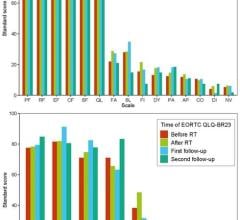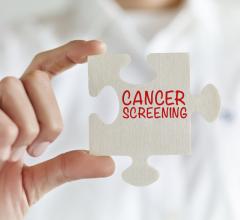September 25, 2013– Cianna Medical Inc., announced results of two new studies showing excellent longer-term outcomes with the SAVI (strut adjusted volume implant) breast brachytherapy applicator, including low recurrence rates, few toxicities, excellent cosmetic outcomes and high rates of survival. A third study demonstrated SAVI’s ability to precisely deliver radiation while avoiding critical structures. SAVI is a strut-based applicator that delivers accelerated partial breast irradiation (APBI), a five-day course of targeted radiation for early-stage breast cancer.
Data came from the SAVI Collaborative Research Group (SCRG), which studies the long-term outcomes of women treated with ABPI with SAVI and will be presented as posters at the 55th annual meeting of the American Society for Radiation Oncology (ASTRO), Sept. 22-25, 2013, in Atlanta.
“APBI is an accepted treatment for certain women with early-stage breast cancer, with multiple Phase II and III clinical trials demonstrating its efficacy and safety,” said Robert Kuske, M.D., co-principal investigator of the SCRG and a radiation oncologist at Arizona Breast Cancer Specialists, Phoenix, Ariz. “This new data further validates strut-based brachytherapy as a safe and effective method for delivering partial breast radiation, which means more women will have access to a treatment that delivers highly targeted radiation with much greater convenience.”
The first study detailed outcomes with the most mature follow-up of patients treated with strut-based APBI. The multi-institutional study examined 101 patients with a median follow-up of 4.5 years, reporting very low toxicity rates (< 3%) and excellent local control (2%). Overall and cause-specific actuarial survival rates were 100 percent.
“On longer follow-up, strut-based brachytherapy continually meets the standards we look for in a safe and effective breast cancer treatment – very high rates of survival and local control, few toxicities and excellent cosmetic outcomes,” said lead author Catheryn Yashar, M.D., a radiation oncologist at UC San Diego’s Moores Cancer Center, La Jolla, Calif., and co-principal investigator of the SCRG.
A second study of a larger population (576 patients) with a median follow-up of three years reported similarly favorable results, including low toxicities and a local recurrence rate of less than 2.5 percent. Overall and cause-specific actuarial survival rates were 99.5 percent.
“Strut-based brachytherapy makes it possible to approach breast cancer treatment in a more sophisticated way. SAVI’s unique design enables physicians to customize radiation specific to the patient, allowing us to offer a very personalized level of care,” said lead author Robert Hong, M.D., a radiation oncologist at Virginia Hospital Center, Arlington, Va.
The final study analyzed the radiation treatment plans for over 1,000 patients in the SCRG. The data demonstrated SAVI’s flexibility in shaping the radiation dose cloud, which researchers concluded protects critical structures and makes brachytherapy an option for patients who would not be candidates for other single-entry devices. The poster was presented by medical physicist Jay Reiff, Ph.D, a professor in the Department of Radiation Oncology at Drexel University Hospital, Philadelphia, Pa.
For more information: www.ciannamedical.com


 April 25, 2024
April 25, 2024 








